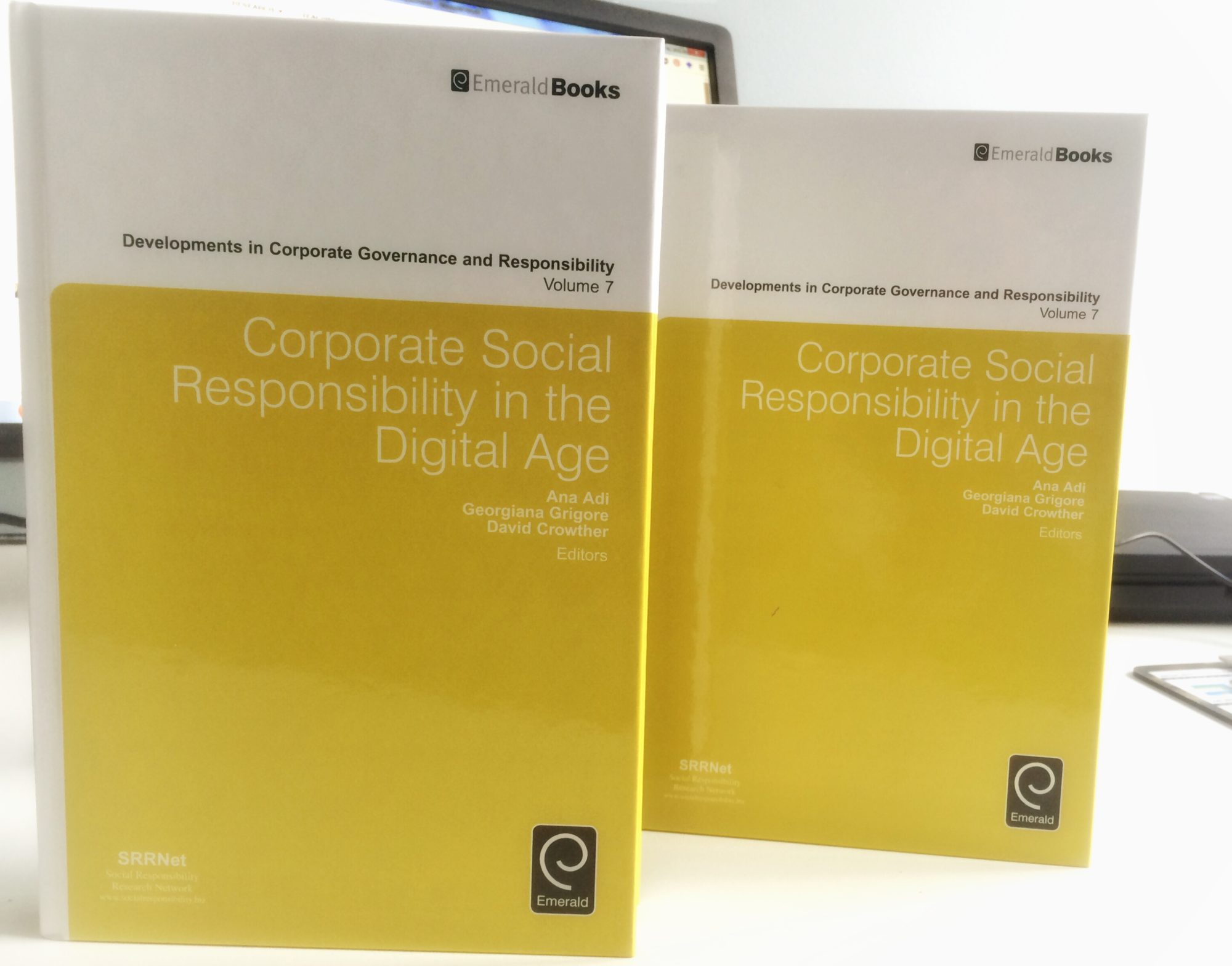I have just received in the post today my complimentary copies from Emerald of “Corporate Social Responsibility in the Digital Age”. Part of David Crowther`s Developments in Corporate Governance and Responsibility series, side effects this volume edited with Georgiana Grigore and David Crowther is the first I co-edited.
It has been quite a journey with many learning points about managing projects, for sale handling collaborations, keeping deadlines and much more. I am grateful and thankful to our contributors for their work as I am thankful to the Emerald team for their excellent work in making this volume happen.
Besides the excellent contributions that provide research and inshight from North America, Europe and Asia, the book also contains 3 co-authored chapters, two of which showcasing some of my research about digital media with digital media methodologies and tools (the kind of work I refer to in my digital humanities talks). In both cases we’ve been looking at the pharmaceutical industry and their online communications and used a combination of free tools to capture and analyze data.
View the full table of contents
Some highlights from my chapters
In the chapter co-authored with Georgiana Grigore and Anastasios Theofilou, we discuss how Pfizer, GlaxoSmithKline and Sanofi (all in the top 10 of US foundations by total giving) use their websites to articulate their CSR strategies. We used an exploratory research that combines semantic analysis of the way the mission, vision and objectives are integrated in their strategy. We therefore integrated tools like Wordle and VOSViewer to gain insight into the emerging themes from the textual data collected and therefore compare the similarities and differences between the three companies.
In the chapter co-authored with Georgiana Grigore, we analyzed how Pfizer’s European offices use social media to communicate online. We used social media audits and tools like Foller.me to collect some of our data. Out of the 20 countries that do have a Pfizer country office, only 10 of them have a social media presence. Turkey and Spain have four social media channels each and Belgium has three. All the other countries are present on only one social media platform. They show an overall integration and coordination of messages with themes mirrored from one platform to another. The channels also show an overall compliance and consistency with the brand, most of them displaying bespoke backgrounds, bios and links to the country website.
Print copies can be purchased from Emerlad’s bookstore or via Amazon.
Teaching a module in a related area?
Are you teaching a module in this or a related area? Please get in touch if you have questions or suggestions. Moreover, course instructors can register to read the full-text eBook here.
